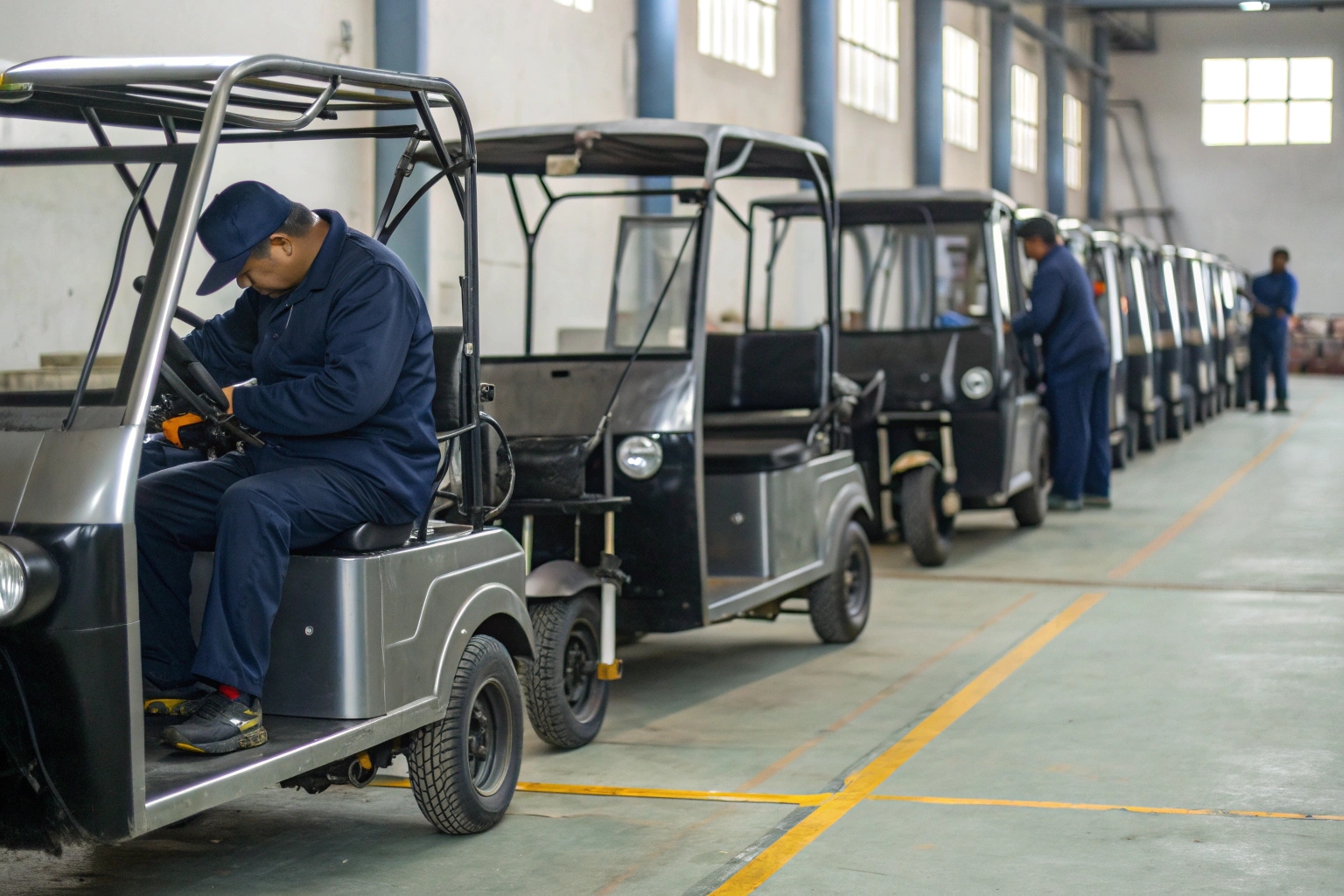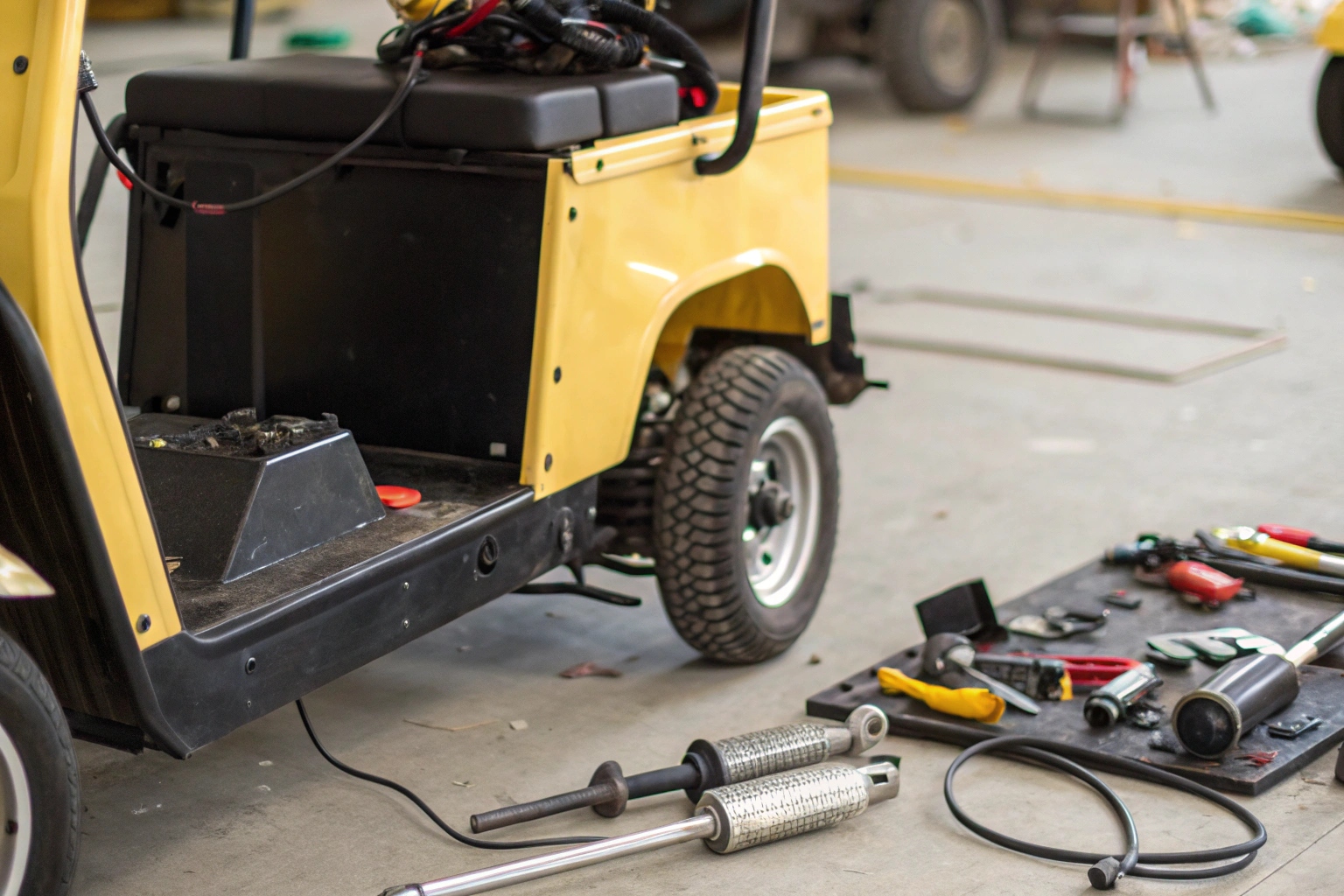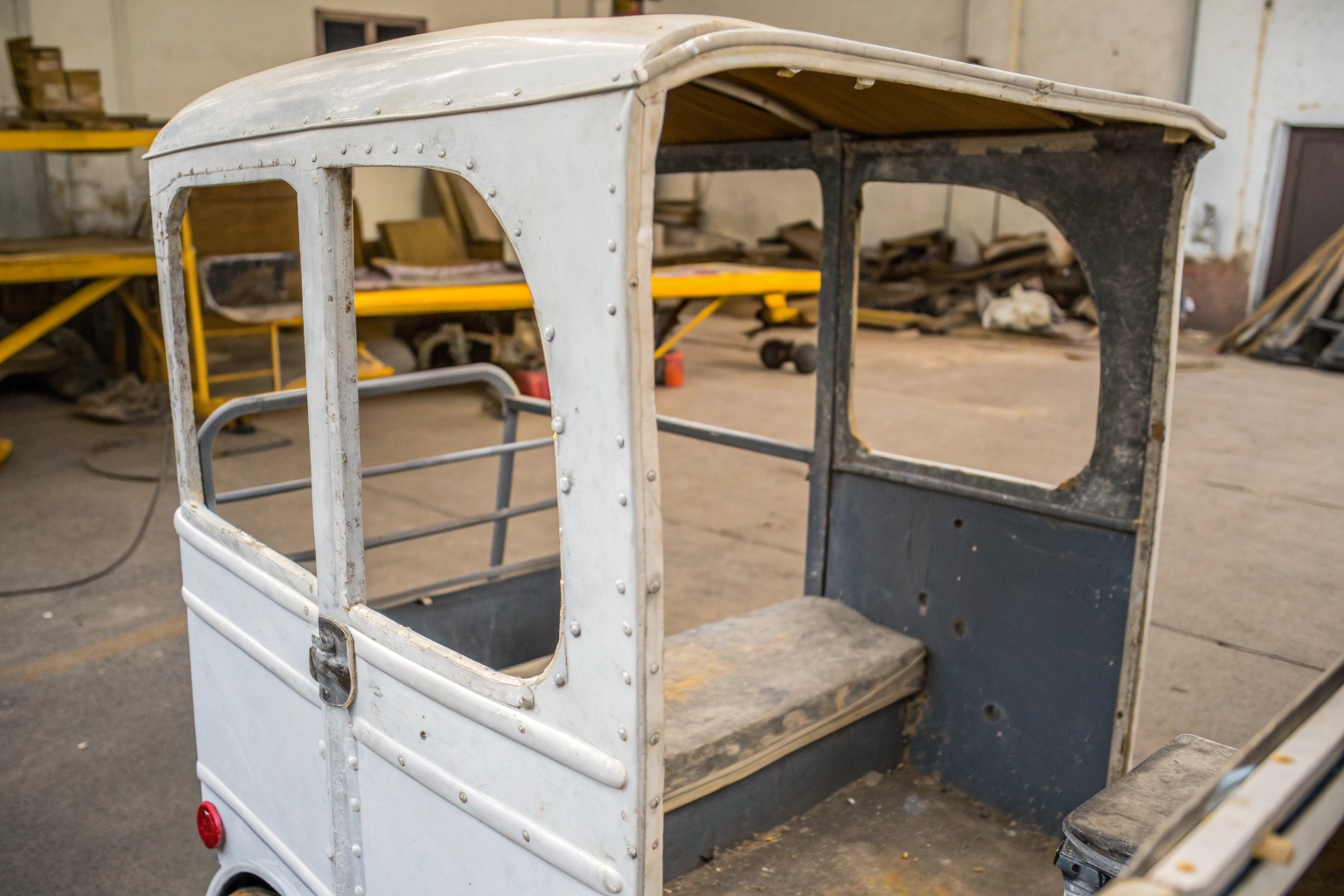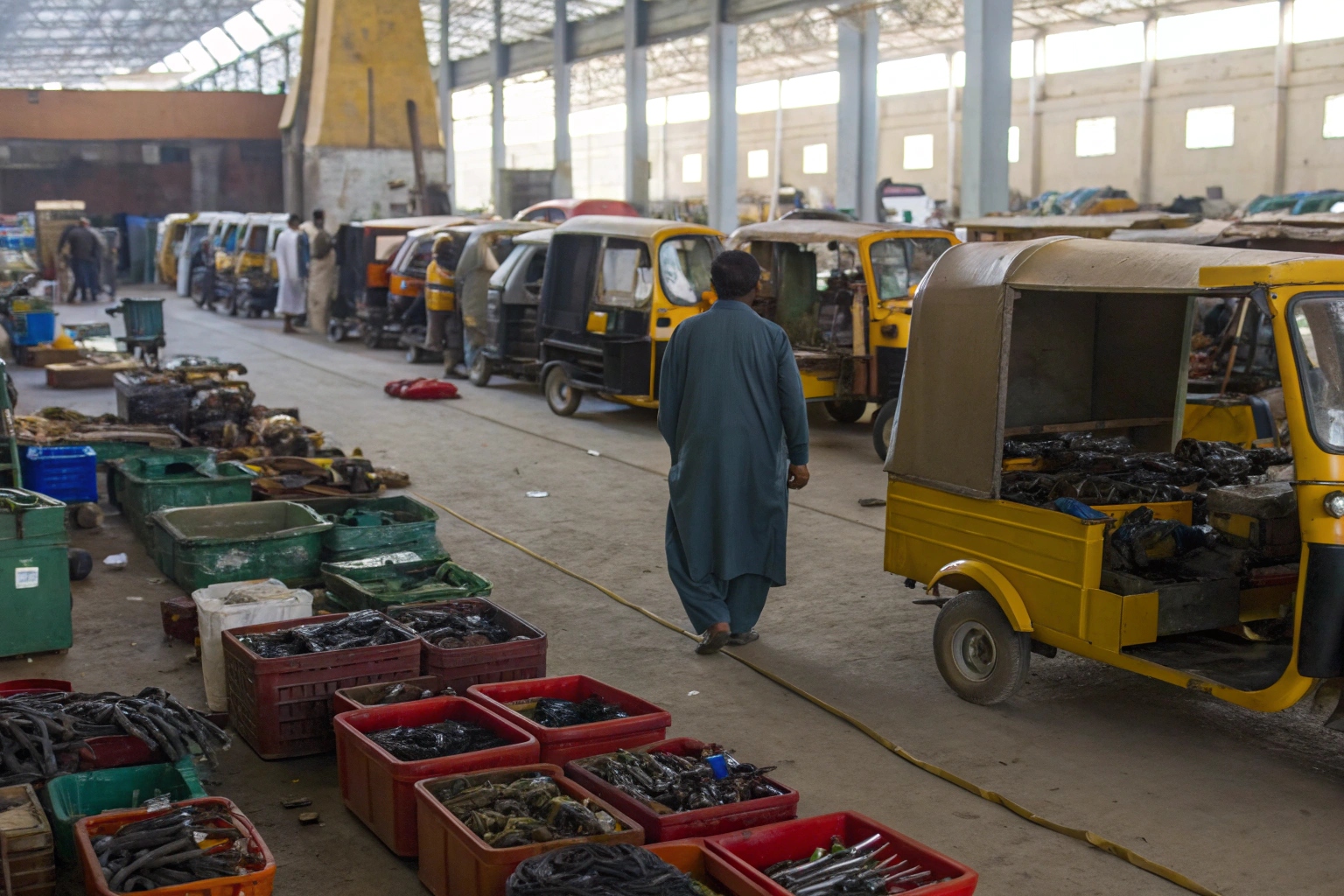Your electric tricycle fleet is stuck with breakdowns. This costs you money in repairs and lost business, damaging your reputation. I will show you how to identify bad parts before they fail.
Quickly spot low-quality parts by checking physical details like rough edges and inconsistent weight. Insist on genuine packaging with warranty information, and only buy from reputable suppliers or the original factory. These simple checks protect your investment and keep your fleet running.

As a factory, we see the damage that low-quality parts cause. A client's entire fleet can be grounded, not because the electric tricycles are bad, but because a cheap, counterfeit component failed. I've seen importers lose thousands of dollars trying to save a few bucks on a critical part. The good news is, you don't need a high-tech lab to protect yourself. You just need to know what to look for. Let's get into the details so you can avoid these costly mistakes.
Which E-Rickshaw Spare Parts Are Most Prone to Low Quality?
A breakdown always costs you, but some parts fail more often. These recurring failures create hidden risks and expenses that can cripple your operations. You need to know where to focus.
The parts most prone to low quality are batteries, motors, and brake systems. Counterfeiters target these components because they are high-wear and expensive to make properly, making them a profitable target for cutting corners with cheap materials.

From my experience dealing with fleet maintenance issues, problems always cluster around a few key areas. These are the parts that do the most work and cost the most to produce with high-grade materials, so it's where shady workshops try to save money. When a client from the Philippines called me about his new fleet having constant issues, we traced it back to a single batch of bad controllers that lacked proper waterproofing. They looked fine on the outside, but one rainy day took half of his fleet off the road.
Here are the top offenders and what to look for:
| Part | Common Problem of Low-Quality Version |
|---|---|
| Battery | Fake capacity (doesn't last the day), short cycle life, built with recycled cells. |
| Motor | Uses aluminum wire instead of copper, causing it to overheat and lose power. |
| Brake System | Poor quality brake pads and drums that wear out extremely fast, creating a safety hazard. |
| Controller | Lacks proper waterproofing seals, leading to short circuits in wet conditions. |
| Frame/Suspension | Made from low-strength steel that can easily rust, bend, or even crack. |
How Can You Quickly Spot Poor-Quality Spare Parts?
You don't have a laboratory to test every part. But waiting for a part to fail on the road is too late and too dangerous. You have to learn how to spot the fakes yourself.
You can spot fakes with your own hands and eyes. Check for poor workmanship like rough edges and uneven paint. Compare the weight to a genuine part. Real parts also come in quality packaging and include a warranty, which counterfeiters rarely bother with.

You can tell a lot about a part just by holding it. We had a client in Mexico who ordered a batch of motors from a trader. He noticed they felt lighter than the originals. He was right. The manufacturer had used aluminum windings instead of copper to save money. The motors overheated and failed within months. This is a basic check anyone can do. Trust your senses. A quality part feels solid and well-made. A fake often feels cheap because it is. Look for sloppy welds, mismatched colors, or plastic that feels brittle. Also, check the packaging. A real manufacturer spends money on good boxes with security features like holograms or QR codes. A fake part often comes in a plain box or a plastic bag with no branding.
Where Do Low-Quality Spare Parts Commonly Come From?
You found spare parts online at an amazing price. But that great "deal" is usually a trap that will cost you much more in the long run. Knowing the risky sources is half the battle.
Low-quality parts typically come from three places: small, unregulated workshops, sellers of "refurbished" parts with no history, and massive wholesale markets where good and bad products are mixed together. These channels compete on price alone and have zero quality control.

It is tempting to buy from a supplier who is 20% cheaper, but you have to ask yourself why they are so cheap. The answer is always cut corners. Small workshops have no brand to protect, so they use the cheapest steel, the thinnest wires, and the worst cells they can find. Also, be very careful with "refurbished" or "reconditioned" parts. A refurbished brake drum might look new, but it's a worn-out part that has been painted over—a serious safety risk. The most dangerous source can be the giant, low-price wholesale markets. You might find some good deals, but they are sitting right next to piles of counterfeit junk, and it's hard to tell the difference until it's too late.
What Can Importers Do to Avoid Low-Quality E-Rickshaw Parts?
You are tired of getting burned by bad parts and unpredictable suppliers. It can feel like a lottery you can't win. But you can take control and build a reliable supply chain.
To guarantee quality, partner directly with the Original Equipment Manufacturer (OEM) or a reputable factory like us. Always test samples before placing a bulk order, conduct pre-shipment inspections, and sign a clear contract that specifies your quality standards.

The best way to avoid fake parts is to go directly to the source. As the factory that builds the electric tuk, we are the only ones who can guarantee a genuine part made to the correct specification. If you are a serious importer, this is the professional strategy. Build a long-term relationship. Before you commit to a large order, always order and test samples in your own operating conditions. For larger orders, consider hiring a third-party inspection service to check the goods before they leave the factory. Finally, protect yourself with a strong purchase contract. Your contract should clearly state the material specifications, performance standards, and warranty terms. This protects you and holds the supplier accountable.
Conclusion
Avoiding bad parts is not about luck. It is about knowing what to look for, who to trust, and building strong, direct partnerships with the factory that makes your vehicles.

